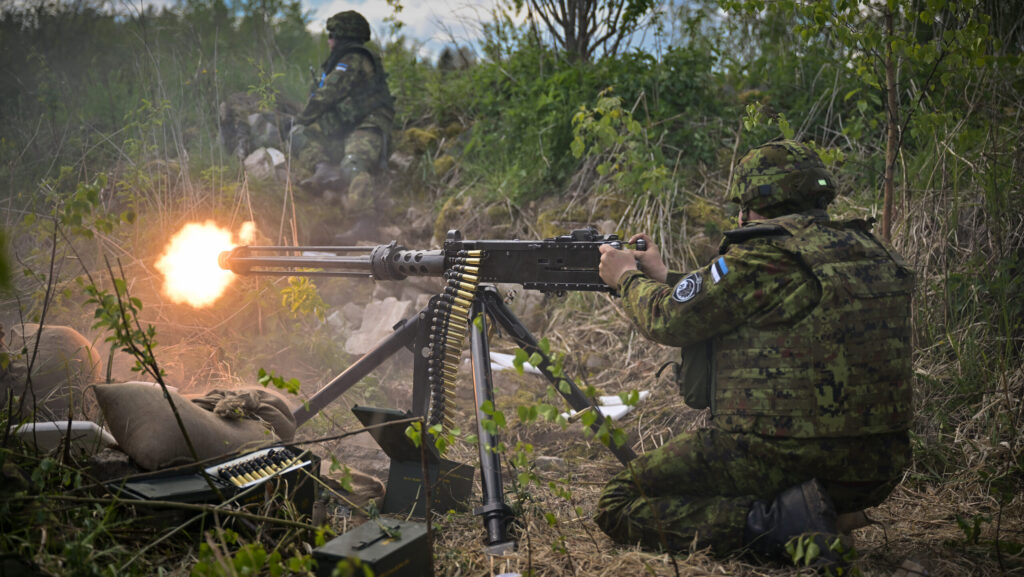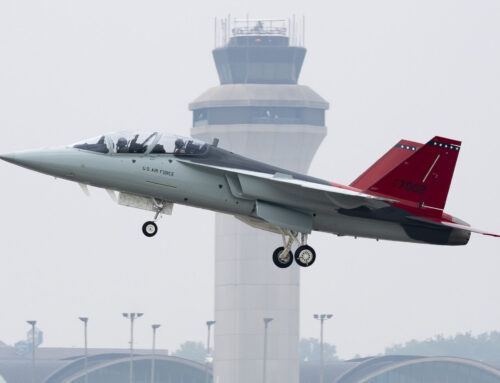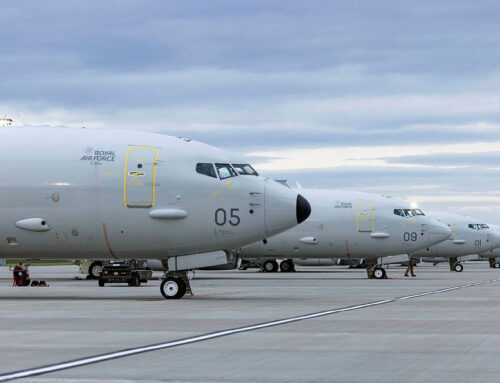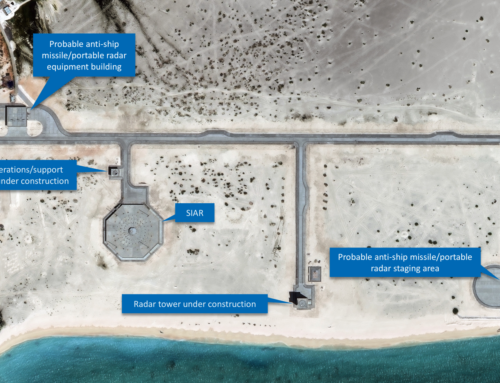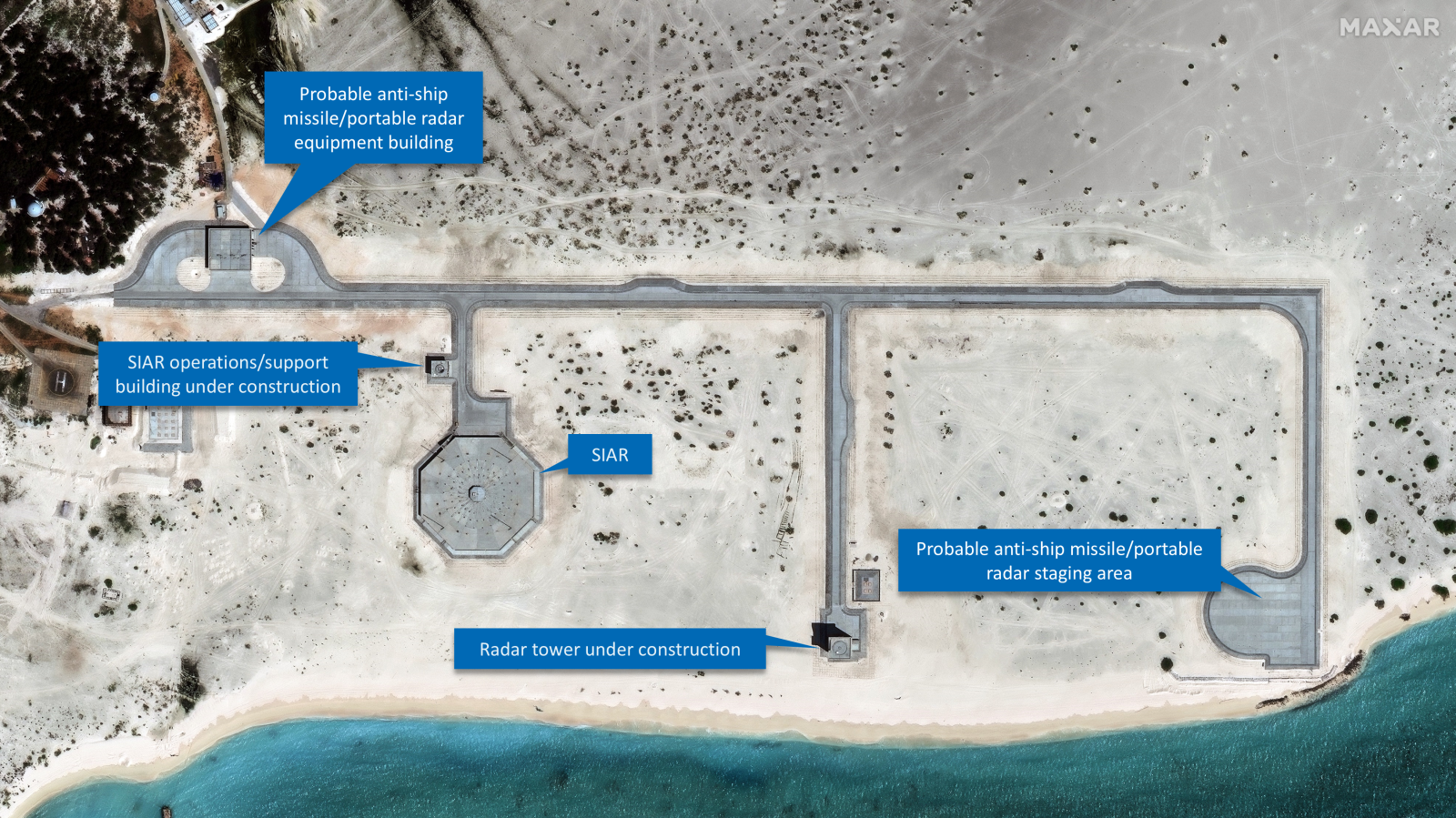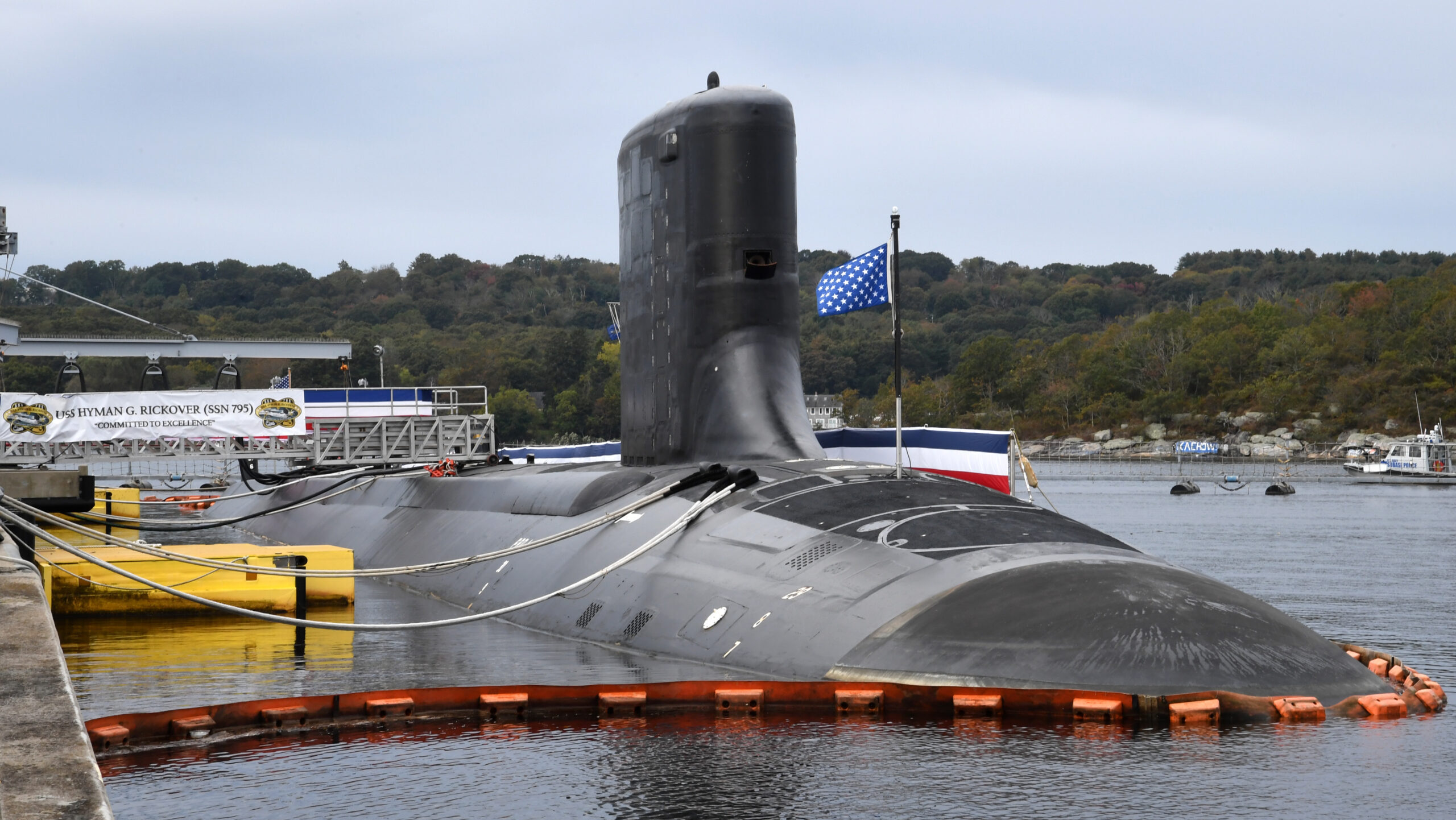Reservists from the 2nd Estonian Infantry Brigade take part in maneuvers during NATO exercise Hedgehog on the Estonian-Latvian border on May 25, 2022 in Voru, Estonia. Fifteen thousand troops from fourteen countries are taking part in one of the largest ever military exercises to take place in the Baltics. (Photo by Jeff J Mitchell/Getty Images)
TALLINN and WASHINGTON — Armed with a marker and a white board, Estonia’s chief of defense jotted out what looked like gibberish, but to his mind was a simple algorithm that held the future of his country in the balance — a “formula,” Gen. Martin Herem said, for “when Russia is coming.”
It looked something like this: -U + yˆG – W + EST(N)
Translated, that’s minus the time when fighting stops in Ukraine (U), plus the time Moscow needs to prepare to make a move (y) — Herem believes hardly any time at all — modified by Russia’s ultimate goal (G), minus the world’s attention and the opportunity for Russia to act (W), plus Estonia’s readiness (EST), multiplied by NATO’s collective readiness (N).
Herem acknowledged he’s not a mathematician by trade, but the real problem, as he sees it, is that each of those variables is, well, variable — all except one.
“There’s only one factor that we can change: our readiness,” he said in early May. “We can support Ukraine, but one day [Russia] is coming out.”
That tiny Estonia exists under the NATO security umbrella seems to give Herem little reassurance. And while he sounds more bluntly fatalistic than others, Herem — who retired on July 1 — is hardly alone in his dim view of Russian President Vladimir Putin’s designs on northeastern Europe.
The war in Ukraine can feel abstract for much of the world, but nations close to Russia’s border have been forced to reckon with its practical implications: Namely, what will Putin do with his reconstituted army and ramped up industrial capacity when the fighting to the south dies down, one way or the other?
More southern, non-NATO nations like Moldova may have more to fear, but in briefings, interviews and exchanges with Breaking Defense over the past two months, Herem and the chiefs of defense from four other NATO nations — Norway, Sweden, Finland and the United Kingdom — each described their countries as existing inside a crucial “window” during which there is precious time to build up their own defenses in order to deter the Kremlin from making a move or, if it comes to it, to repel a Russian attack.
“If we talk about the window of opportunity, the window of opportunity is there for us to reinforce, and build stronger national defenses to be used as NATO deterrence,” Gen. Micael Byden, Sweden’s defense chief, told Breaking Defense. “So it’s more the window to act now, not waiting.
“If this is a window of three or five years or more, I don’t know better than anyone else. It’s a window, it’s there, and we [will] do whatever we can to build a stronger national defense.”
‘No Conventional Threat’ … For Now
Byden’s stance was echoed, in various ways, by all four of the other defense chiefs: There is a consensus that, right now, Russia is in no position to launch a ground invasion of a NATO nation, and may not be for some time. And while the defense leaders largely made their comments before Ukraine started to see a turnaround against Russia, the basic facts remain.
Gen. Eirik Kristoffersen, Norway’s chief of defense, said in an April interview that he is “comfortable” with the fact a major invasion by Russia is unlikely in the near term.
“There’s no conventional threat on our borders. If you look at the number of troops in Russia, on just before the 24th of February [2022], you had two brigades on that original border. And then you had one brigade outside the Finnish border. So basically, three brigades in our close, close area. Now they’re down to company size units. So 80 percent of those units are now being deployed to Ukraine, and many of them have been destroyed in Ukraine.”
Gen. Martin Herem was the Estonian chief of defense until July 1, 2024. (Estonian Defence Forces)
Finland’s chief of defense, Gen. Janne Jaakkola, told Breaking Defense that beyond some hybrid operations, Helsinki currently doesn’t see an “immediate military threat” against his country either, “but even quick changes are possible.”
“Russia is surely assessing what the capabilities and capacity of Western armed forces are both in the short-term and in the longer-term,” Jaakkola said in an email. “We can assess Russia’s military capability development, but it is naturally difficult to assess the intent of the Russian leadership. There is no certainty on how Russia will act in the future.”
While not charged with defending a front-line state with Russia the way his colleagues are, Adm. Sir Tony Radakin, the Chief of the UK Defence Staff, agreed that Russia is in no position to launch an attack near term — and seemed to be more skeptical about the possibility of Moscow attacking a NATO nation altogether.
“I think when you then look at it at the tactical level, a tactical and operational level, the notion that whilst Russia is in Ukraine, and is struggling in Ukraine … It seems almost inconceivable that Russia would consider or have the capacity to take on a country in NATO,” Radakin said during a May media roundtable in Washington.
“And when you think that through further, NATO has got an extraordinary overmatch with Russia in all of the conventional areas. So I slightly struggle with this notion, that somehow it would be in Russia’s interests to attack a NATO country, and especially whilst it’s bogged down in Ukraine.”
But for defense leaders closer to the Russian border, the time period that preoccupies them is after the fighting in Ukraine is over, after Russia is no longer bogged down. Specifically, how long between that point and the point at which Putin believes his military is strong enough to act elsewhere?
Essentially, how big is the window to prepare?
A Question Of Time
As Harem’s mathematical equation lays out, it’s hard to know what that window truly looks like, given the sheer number of variables. The consensus on the most obvious way to stretch that window as long as possible is to support Ukraine, something Kristoffersen has described as his main priority. The longer Russian forces are tied up in Ukraine, and the more losses they suffer in the fight, the harder it is for them to rebuild and move troops back to the border with NATO.
During a May interview at the Swedish Embassy in Washington, Byden put forth three to five years as a notional window, and Herem echoed a vague three-year deadline to get Estonia’s military affairs in order.
Kristoffersen told Breaking Defense, “I always said we have a window. But I don’t know how long this window will last.” However, in a June 4 interview with the Kyiv Independent, the Norwegian chief said he sees a “window now for the next two to three years to rebuild our forces.”
The head of the Norwegian Armed Forces Gen. Eirik Kristoffersen addresses a press conference during the NATO Military Committee Conference 2023 (MCC23) at the Holmenkollen Scandic hotel in Oslo, Norway, on September 16, 2023. (LISE ASERUD/NTB/AFP via Getty Images)
Here again Radakin was more optimistic: “If [the war in] Ukraine was to come to an end, I think you’ve got two other factors that come into play. For the Russian army to reconstitute itself back to where it was Feb. 22, is probably at least five years. And what we’ve seen is that the army that embarked on operations Feb. 22 is not a particularly competent army.
“And therefore, if you start to say, if the Russian ambition was to have a competent army, that might be able to do operations at a scale that could sensibly threaten NATO, then that feels to be much further away. And that’s probably at least a 10-year project.”
In comments to Breaking Defense, a trio of outside voices broadly agreed with the closer-in timetable — but raised some red flags with the concept.
Jorge Benitez, a NATO expert with the Atlantic Council, said the difference in opinion between the officers comes down to the sheer number of variables involved. For his part, Benitez called the window “small, and will only last about two years.”
“Russia is re-arming itself and doing so with greater commitment and at a faster pace than NATO. If NATO does not re-arm itself faster than Russia, then the democracies will give Putin a window to initiate further attacks while he feels relatively stronger and in need of foreign wars to stay in power,” Benitez warned.
Ian Brzezinski, also of the Atlantic Council, gave an “off the cuff” estimate of three to four years. But, he cautioned, that “this discussion on windows leaves me very uncomfortable.”
“I worry about the concept of a window because it could lead, or is leading, the Alliance to think it is some safe space, a conclusion that could lead it to dawdle on actions needed to reinforce its deterrence/defense posture,” he wrote in an email. “I am not convinced that the Alliance will fully exploit that window. Look at our efforts to support Ukraine and rebuild our defense industry and stocks. They simply do not reflect the needed urgency.”
Jim Townsend, a former US defense official now with the Center for a New American Security, sounded a more optimistic view: that Putin, bloodied by Ukraine, simply won’t be looking to launch a new war if and when the conflict with Kyiv settles down.
“The era of talking about a window and giving it 3-4-5 years, as if it’s inevitable that Russia will invade NATO” may already be out of date, he said. “I don’t think people [should be] talking so much about Russian tanks moving in another direction. I just think he likes working in the gray zone too much.”
Admiral Sir Tony Radakin, the chief of the UK defence staff, arrives in Downing Street to attend the weekly Cabinet meeting in London, United Kingdom on July 04, 2023. (Rasid Necati Aslim/Anadolu Agency via Getty Images)
The Post-Ukraine Mystery, And Trouble In The Meantime
If NATO does have a window, it seems fair to say Putin is gripping the other side of it, trying to force it closed as quickly as possible. After all, as Pentagon planners like to say, “the enemy gets a vote.”
The problem, Kristofferson told Breaking Defense, is that Russia is rebuilding at a faster pace than had been expected just a year ago.
“I have more sense of urgency in 2024 than I had in 2023” about how quickly Russia can rearm its military, Kristoffersen said, citing support Moscow is receiving from Iran and North Korea. “The modernized, or the rebuilt Russian force is closer to us now than I would say one year ago.
“I don’t know to what extent Russia will rebuild their forces,” he said. “And I don’t know how they will balance air, land and sea forces. And I don’t know what lessons-learned the Russians will draw from the war in Ukraine. So there might be a different set of forces on their border based on what they have learned in Ukraine. So that remains to be seen.”
Brzezinski warned that Russia’s overall manpower is roughly equivalent to where it was at the start of the war, thanks to major recruitment drives. And Moscow’s naval and air forces, while having taken impressive losses in Ukraine given what Kyiv is working with, are still largely intact.
And while Russia works to rebuild its forces, it can still offer other challenges.
“When it comes to ground assets, they are tied up in Ukraine. But it doesn’t necessarily mean that the Russians cannot act. They have capabilities in the air, they have maritime or naval assets, they do nonlinear warfare — information operations, cyber attacks and whatever,” Byden said. “So they can still act. But I’m not looking at huge Russian army units coming over the border, we don’t see that.”
This photograph shows Russia’s President Vladimir Putin, seen on a smartphone screen and a laptop screen, addressing the nation in Moscow, on June 26, 2023. (NATALIA KOLESNIKOVA/AFP via Getty Images)
“We have to assume Putin is always considering all his options — including, say, a limited land grab backed by nuclear threats with aim of intimidating and dividing the Alliance.” Brzezinski added. “The risk of horizontal escalation is always there with someone like Putin with his ambitions and his disdain for the West and his low regard for the West’s resoluteness.”
Townsend agreed, noting that Putin “feels more comfortable in the gray zone, where he can get away with it. And it has an impact, and makes everybody nervous.”
He put forth the concept of Russia making a limited play in the future, highlighting the Estonian city of Narva as one example. That city, which is the furthest eastern point of Estonia, has a large Russian-speaking population and would be fairly easy to cut off from the rest of the country.
“The idea is like with the Donbas, separatists make noises and do some things, the Russians could go in with a small way, and just take that town,” Townsend explained. “Estonia turns to NATO, says ‘We’ve been invaded,” and it throws NATO into a panic because, does NATO want to go with war with Russia over this tiny town?
“It’s what he did when he went into Crimea — Little Green Men to start, in case the West opposed him. When we didn’t, he kept going. If the cost benefit is right so he can do something to embarrass NATO, he’s more likely to do it.”
Preparing For The Worst
Speaking earlier this month, Maj. Gen. Matthew Van Wagenen, deputy chief of staff for operations at NATO’s Supreme Headquarters Allied Powers Europe, was asked about the sense from the border states with Russia that conflict is inevitable. He didn’t go as far as publicly agreeing, but said he understood that “this is how they look at the world.”
“You know, nobody knows what Putin’s next move is going to be,” he said. Even though 700,000 Russian soldiers are busy in Ukraine, Moscow “harbor[s] great capability, and we don’t know where this goes next.” That’s why he called NATO’s plans to modernize its capabilities “deadly serious.”
For Herem, he said Estonia doesn’t have the luxury of waiting to see how things will really shake out. He wants his military ready to fight Russia as soon as possible so that, as his successor for the position of chief of defense for Estonia Andrus Merilo put it, Estonia can “halt that first wave and your country will remain and others will come to help.”
Should the fighting reach the streets of Tallinn, Herem said that’s where they’ll fight.
“We will stab them from behind, in darkness,” he said.


